The proliferation of space debris presents a complex and pressing issue within the realm of space exploration. As the number of objects continues to rise, the need for effective solutions becomes increasingly urgent. From advanced tracking technologies to innovative cleanup methods, the quest to manage space debris requires a multifaceted approach. Addressing the environmental impact, operational disruptions, and legal considerations surrounding space debris demands a comprehensive strategy that combines cutting-edge technology with international cooperation. The challenges are vast, but the solutions are within reach, promising a glimpse into the future of sustainable space endeavors.
Key Takeaways
- Space debris accumulation poses collision risks and pollution threats, necessitating cleanup efforts.
- Improved detection technologies and real-time monitoring are crucial for effective space traffic management.
- Debris removal strategies like harpoons and nets target congested orbits for mitigation.
- International collaboration and legal frameworks are vital for sustainable space debris management.
Overview of Space Debris
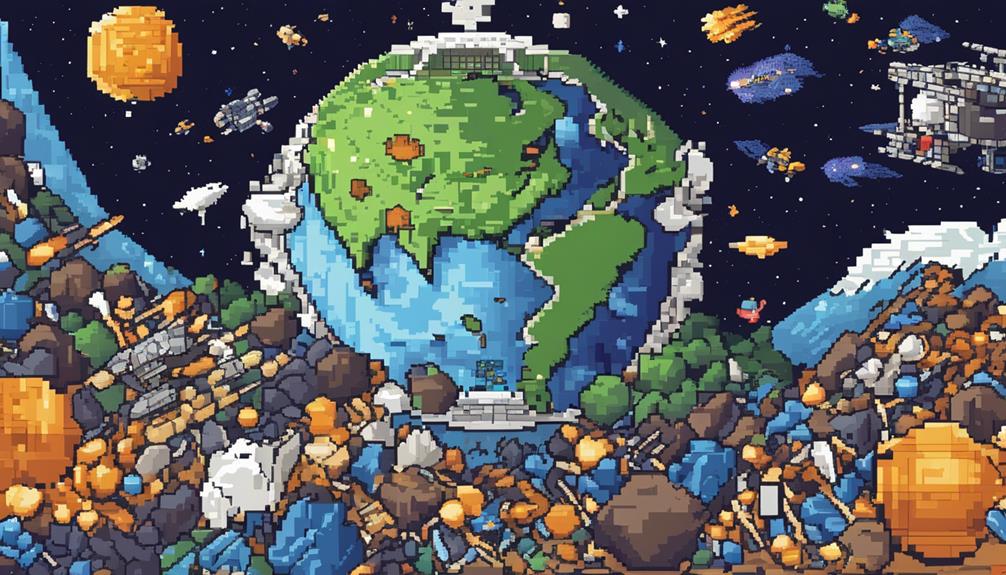
Space debris, comprising a vast array of artificial objects ranging from defunct satellites to discarded rocket stages, poses a significant threat to activities conducted in Earth's orbit due to the sheer volume of debris present. Currently, there are over 27,000 objects larger than 10 centimeters and hundreds of millions of smaller debris pieces orbiting Earth, as estimated by NASA. This extensive accumulation of human-made objects in space not only clutters the orbital environment but also escalates collision risks for operational spacecraft and satellites.
The presence of space debris introduces a critical challenge for space agencies and companies conducting activities in Earth's orbit. The risk of collision with debris jeopardizes the safety and functionality of satellites, spacecraft, and even crewed missions. Neglecting the management of space debris can lead to catastrophic consequences, including the generation of more debris from collisions, creating a cascading effect that exacerbates the issue further.
To mitigate collision risks and safeguard space infrastructure, accurate tracking and monitoring of space debris are imperative. Space agencies around the world employ sophisticated technologies and tracking systems to map the trajectories of debris and predict potential collisions. By actively managing space debris and implementing collision avoidance strategies, the space community aims to ensure the sustainability and safety of activities in Earth's orbit.
Environmental Impact of Debris
Space debris poses a critical threat to Earth's environment due to debris pollution effects, potential ecosystem damage, and the challenges associated with cleanup efforts. Assessing the impact of debris on the environment requires a comprehensive evaluation of its effects on terrestrial and space ecosystems. Progress in cleanup efforts is essential to mitigate the environmental consequences of space debris and ensure the sustainability of future space activities.
Debris Pollution Effects
The proliferation of space debris poses significant environmental challenges due to its detrimental effects on Earth's orbital environment and operational satellites and spacecraft. Existing space debris increases collision risks in space, endangering crucial infrastructure such as communication and weather satellites. Debris fragments can trigger cascading collisions, leading to the creation of more debris and further jeopardizing space missions. This pollution also poses risks to astronauts aboard the International Space Station and future crewed missions. Addressing the risks space debris poses involves developing strategies to mitigate collisions and reduce the generation of additional debris. Below is a table highlighting the key effects of debris pollution on the orbital environment and operational satellites and spacecraft:
| Effects of Debris Pollution | |
|---|---|
| Increased Collision Risks | Endangered |
| Cascading Collisions | Damaging |
| Risks to Critical Infrastructure | Endangering |
| Threats to Astronaut Safety | Hazardous |
Ecosystem Damage Assessment
Debris pollution's impact on Earth's ecosystem is a critical concern, particularly regarding the assessment of ecosystem damage resulting from potential collisions with operational satellites and spacecraft. The assessment of ecosystem damage from space debris involves:
- Evaluating the risk of collisions between debris and operational satellites.
- Understanding the potential for cascading collisions that could generate more debris.
- Assessing the consequences of debris re-entering Earth's atmosphere and potentially causing surface damage.
- Developing strategies to mitigate the risks posed by the increasing accumulation of space debris and safeguard Earth's ecosystem against the long-term impacts of collisions.
Cleanup Efforts Progress
Progress in addressing the environmental impact of space debris is being made through ongoing cleanup efforts focused on mitigating collision risks and maintaining a sustainable orbital environment. Debris removal initiatives target the most congested regions, such as low Earth orbit, where operational satellites and spacecraft are most vulnerable to collisions. By actively removing defunct satellites, spent rocket stages, and other debris, the risk of further fragmentation and the creation of additional hazardous particles is reduced. These cleanup efforts not only help protect existing space assets but also pave the way for future space exploration missions by ensuring a safer orbital environment. Implementing effective debris removal strategies is crucial for preserving orbital space and mitigating the environmental impact of space debris on satellite operations and space missions.
Satellite Operations Affected
The increasing risk of collisions between satellites and space debris presents a significant challenge to satellite operations. With over 27,000 objects larger than 10 centimeters and numerous smaller debris pieces in Earth's orbit, the potential for mission disruptions and satellite damage is substantial. Implementing effective orbital space cleanup strategies is crucial to mitigate these risks and ensure the uninterrupted functionality of satellites in space.
Satellite Collision Risks
Collisions with space debris present a formidable challenge to satellite operations, posing a significant threat that can result in mission failure.
- Risk Assessment: Accurate tracking and monitoring of space debris are crucial to assess collision risks and protect satellite assets.
- Collision Avoidance: Developing effective collision avoidance strategies is essential to mitigate the impact of space debris on satellite operations.
- Satellite Vulnerability: Space debris can damage or disable satellites, disrupting communication, navigation, and Earth observation services.
- Debris Removal: Implementing efficient debris removal techniques is vital to safeguard satellite operations and ensure long-term space sustainability.
Orbital Space Cleanup
Orbital space cleanup initiatives are pivotal in mitigating the operational risks posed by the proliferation of space debris in Earth's orbit. Satellite operations face increasing threats from the vast amount of debris present, with over 27,000 objects larger than 10 centimeters and countless smaller pieces endangering functionality. Responsible satellite operations, end-of-life planning, and the development of debris retrieval technologies are crucial for effective space debris cleanup. The International Association for the Advancement of Space Safety (IAASS) and the United Nations stress the importance of global cooperation and mitigation strategies to tackle this issue. Utilizing edge AI applications, digital twins, and innovative technologies such as harpoons/nets can aid in managing space debris. Implementing incentivization methods like an orbital-use fee could further encourage responsible satellite practices.
| Debris Retrieval Devices | Responsible Satellite Operations | Global Cooperation |
|---|---|---|
| End-of-life planning | Development of technology | Mitigation plans |
Current Tracking Technologies
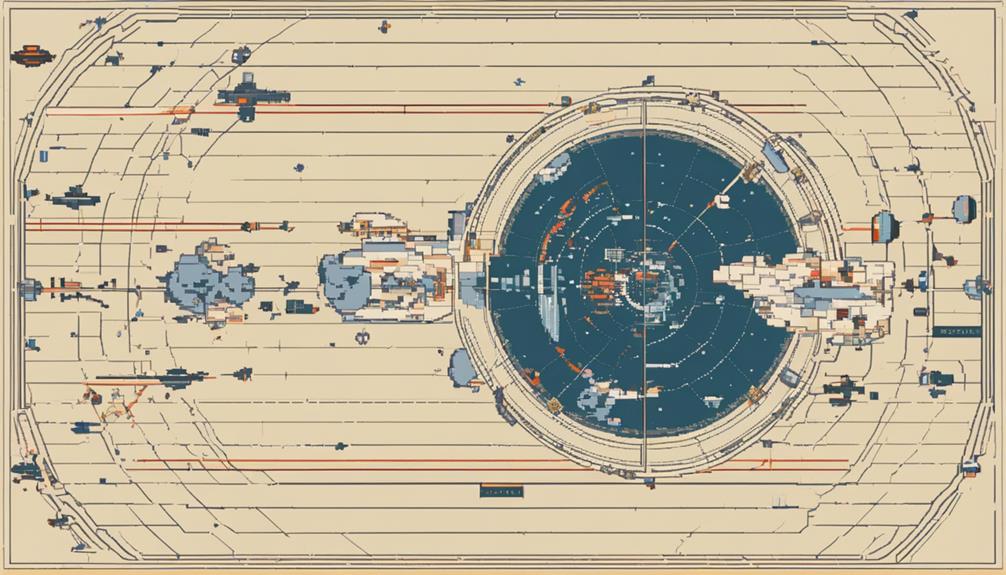
Utilizing advanced ground-based radar stations and optical telescopes, the current tracking technologies employed for monitoring space debris positions and trajectories are fundamental for ensuring the safety and sustainability of Earth's orbital environment. These technologies are vital components of the Space Surveillance Network, providing essential data for space situational awareness and collision avoidance strategies. Key aspects of the current tracking technologies include:
- Ground-Based Radar Stations: Ground-based radar systems are crucial for tracking larger debris objects in Earth's orbit. These stations emit radio waves that bounce off objects in space, allowing for the calculation of debris positions and trajectories. The data collected from radar stations contribute significantly to the accuracy of space debris tracking.
- Optical Telescopes: Optical telescopes enhance the monitoring capabilities by visually tracking space debris, including smaller fragments that may not be detected by radar. These telescopes capture images of debris, aiding in the identification and cataloging of objects in orbit. Combining radar data with optical observations provides a comprehensive understanding of the debris population.
- Satellite Catalogue Maintenance: Organizations like the United States Department of Defense and NASA maintain extensive satellite catalogues containing information about tracked objects and potential collision risks. Regular updates to these catalogues are essential for effective space debris management.
- Sensor Enhancements: Continuous advancements in sensor technologies are necessary to track smaller debris fragments efficiently. Improving sensor capabilities enables better tracking of even tiny pieces of debris, contributing to enhanced space traffic management and collision avoidance measures. Accurate tracking of space debris is critical for predictive modeling and safeguarding orbital space sustainability.
Challenges in Debris Detection
Detecting space debris, especially small fragments, presents intricate challenges due to their size and orbital behavior, necessitating innovative solutions for enhanced surveillance and monitoring capabilities. Current technologies such as radar and telescopes face limitations in detecting small space debris due to their diminutive size and erratic orbital characteristics. This becomes a critical issue in low Earth orbit (LEO) where small space debris, currently not tracked by the United States Space Surveillance Network, poses a significant collision risk.
To overcome these challenges, improved detection methods are imperative for bolstering space traffic management and diminishing collision risks in LEO. Innovative solutions must be devised to furnish real-time data on debris orbits and characteristics, enabling effective debris detection and monitoring. Enhancements in resolution and accuracy are indispensable for detecting and characterizing the multitude of small objects in LEO, allowing for the development of efficient mitigation strategies.
Risks to Space Infrastructure
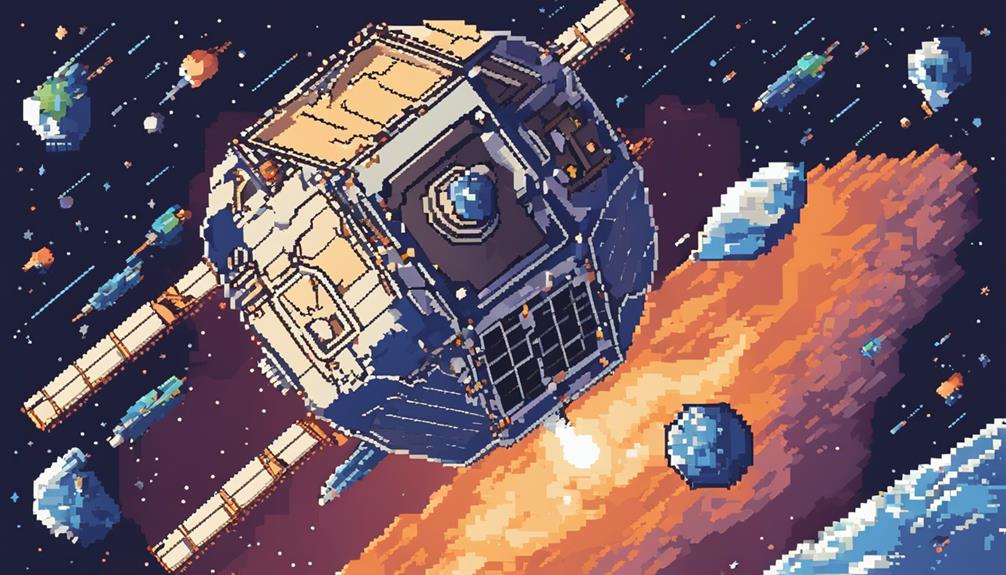
The integrity of space infrastructure faces substantial risks from the vast quantity of space debris scattered throughout Earth's orbit, as highlighted by NASA estimates of over 27,000 objects larger than 10 centimeters and millions of smaller debris pieces. This space junk poses a significant threat to the space industry, with the following key risks:
- Collision Hazards: Debris moving at high velocities can collide with operational satellites, spacecraft, and other infrastructure, potentially causing irreparable damage and mission failure.
- Debris Cascading: Collisions with existing debris can generate further fragments, leading to a cascading effect where new debris fields are created, intensifying the risk to space infrastructure over time.
- Increased Collision Risks: Failure to address the issue of space debris through effective mitigation strategies raises the likelihood of collisions in low Earth orbit, endangering the safety and functionality of critical space assets.
- Presence of Defunct Satellites: The proliferation of defunct satellites and spent rocket bodies in orbit contributes significantly to the growing problem of space debris, requiring urgent attention to prevent further complications for the space industry.
These risks underscore the urgent need for proactive measures to mitigate space debris and safeguard the space environment, ensuring the continued operation and longevity of essential space technologies and innovations.
Orbital Debris Mitigation Strategies
One key aspect of orbital debris mitigation strategies involves the development and implementation of debris removal techniques, which aim to actively clear space junk from critical orbits. Additionally, advancements in collision avoidance technology play a pivotal role in reducing the risk of satellite collisions and preserving operational spacecraft. Spacecraft shielding solutions are also crucial in protecting satellites from potential impacts, contributing to the overall efforts in ensuring a sustainable space environment.
Debris Removal Techniques
Exploring innovative methods for the removal of space debris is crucial in ensuring the sustainability of orbital environments and the safety of space operations.
- Implementing orbital-use harpoons, nets, and laser technology targets large debris objects efficiently.
- End-of-life planning and debris retrieval devices play a significant role in responsible satellite operations for space debris mitigation.
- Global cooperation initiatives such as the IADC and UN promote collaborative plans to address space debris removal challenges.
- Edge AI applications and digital twins, incorporating dynamic models and virtual sensors, enhance real-time decision-making and autonomous monitoring, contributing to more effective and sustainable space debris management.
Collision Avoidance Technology
Collision Avoidance Technology is a critical component of orbital debris mitigation strategies aimed at safeguarding space infrastructure from potential collisions with debris. Innovative solutions such as ground and space laser nudges are utilized to move debris without direct contact, reducing the risk of collisions with satellites. With over 27,000 objects larger than 10 centimeters and millions of smaller debris pieces in Earth's orbit, the threat posed by orbital debris is substantial. Technologies like just-in-time collision avoidance using laser nudges play a vital role in preventing catastrophic collisions in space. Ensuring effective collision avoidance technology is essential for maintaining a secure space environment and guaranteeing the sustainability of space activities, safeguarding crucial assets like satellites from potential damage.
Spacecraft Shielding Solutions
Spacecraft shielding solutions play a crucial role in safeguarding satellites and spacecraft from potential collisions with space debris by utilizing specialized materials and design techniques.
- Debris shields are crucial in protecting spacecraft from high-velocity impacts.
- Whipple shields, consisting of multiple layers, are effective at disintegrating and dissipating debris impact energy.
- Multi-shock shields employ spaced armor layers to reduce the impact energy transferred to the spacecraft.
- Carbon fiber composites provide lightweight yet robust protection against space debris impacts.
Space Debris Removal Techniques
Efficient space debris removal techniques play a crucial role in mitigating the growing issue of orbital debris accumulation in Earth's vicinity. To implement space debris removal effectively, various technologies and strategies are being developed and utilized. End-of-life planning, debris retrieval devices, and responsible satellite operations are recommended techniques for space debris removal. Technologies such as harpoons, nets, and lasers are being innovatively employed to capture and remove space debris from orbit. These methods aim to address the challenges posed by the increasing amount of defunct satellites and other debris in space.
Furthermore, cutting-edge technologies like Edge AI applications are enabling real-time decision-making and autonomous monitoring, enhancing the efficiency of space debris management. Digital twins, which provide dynamic models and virtual sensors, are also proving instrumental in refining space debris removal strategies. Additionally, incentivizing removal through innovative tools and methods is crucial to promote responsible practices in space debris cleanup. This can include considerations such as launch fees that incentivize satellite operators to de-orbit their spacecraft at the end of their operational life, contributing to a sustainable space environment. By continuously improving and implementing these space debris removal techniques, the challenge of orbital debris accumulation can be effectively addressed.
Role of International Collaboration

International collaboration plays a pivotal role in addressing the challenges of space debris. The global efforts required for effective mitigation highlight the necessity of a shared responsibility framework. Cooperative space cleanup initiatives aim to establish specific targets for spacecraft disposal and removal of debris, ensuring a safer and sustainable space environment for future endeavors.
Global Efforts Needed
Collaborative efforts across nations play a pivotal role in addressing the pressing global challenge of space debris and safeguarding the integrity of the orbital environment.
- The European Space Agency (ESA) has been at the forefront of advocating for measures to tackle space debris in low-Earth orbit.
- The World Economic Forum, along with the ESA, has provided crucial recommendations for space debris mitigation strategies.
- The Space Industry Debris Mitigation Recommendations, endorsed by 27 industry stakeholders, highlight the imperative of enhanced collaboration to combat space debris.
- Setting specific targets for spacecraft disposal and debris removal is a proactive step towards fostering collective global action in reducing the threat posed by space debris.
Efforts like these underscore the necessity of international cooperation to ensure a sustainable and secure space environment for generations to come.
Shared Responsibility Framework
A comprehensive framework for shared responsibility in space debris management hinges on coordinated participation from all nations involved in satellite launches. International collaboration plays a crucial role in addressing the escalating issue of orbital debris. Implementing a shared responsibility framework ensures that all countries launching satellites actively participate in debris mitigation efforts. Drawing parallels to successful approaches in other industries such as carbon taxes and fisheries management, the concept of orbital-use fees could be globally implemented for effective space debris management. By incorporating orbital-use fees, satellite operators are incentivized to assess the value of their satellites against the potential costs to the industry, thereby promoting responsible behavior in space exploration. These global efforts aim to establish a safe and sustainable space environment through collaboration and the setting of specific targets for debris removal.
Cooperative Space Cleanup
To effectively enhance space sustainability and mitigate the risks associated with space debris, strategic partnerships among nations are imperative for executing cooperative space cleanup endeavors.
- International collaboration is crucial for effective space cleanup efforts to address the growing issue of space debris.
- Organizations like the IADC and UN promote cooperation among countries to develop mitigation plans for space debris.
- Collaborative initiatives focus on devising strategies for end-of-life planning, responsible satellite operations, and debris retrieval to ensure space sustainability.
- Shared goals for spacecraft disposal and debris removal underscore the importance of global cooperation in mitigating the risks posed by space debris.
Future Space Debris Forecasting
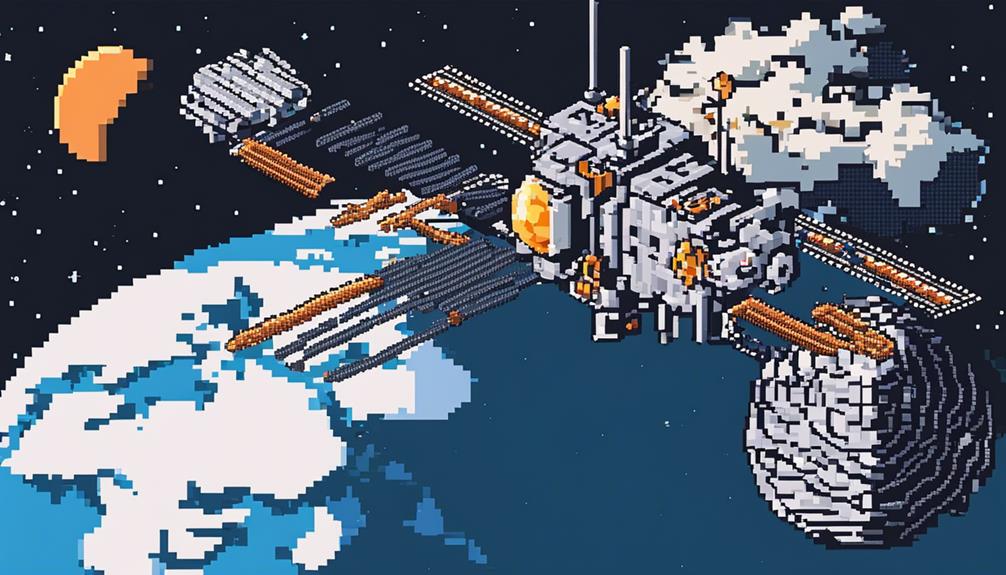
Utilizing sophisticated modeling techniques, future space debris forecasting plays a crucial role in predicting the growth of debris populations within Earth's orbit. Debris orbits, especially those in low Earth orbit (LEO), have been experiencing rapid growth due to increased satellite launches and historical debris accumulation. Forecasting algorithms take into account various factors such as the number of satellites being deployed, collision rates, and the natural decay of debris to estimate future scenarios accurately.
These predictive models are essential for guiding space agencies and operators in implementing proactive measures to mitigate the risks posed by space debris. By providing insights into potential collision risks and the need for sustainable debris mitigation efforts, accurate forecasting enables better planning for debris removal missions and collision avoidance strategies. Moreover, forecasting plays a crucial role in overall space traffic management by helping predict congestion areas and potential threats to operational satellites.
Through the analysis of historical data and trends, future space debris forecasting allows for the identification of high-risk regions in space, enabling stakeholders to focus their cleanup and mitigation efforts effectively. By staying ahead of the curve through advanced forecasting, the space community can work towards ensuring a safer and more sustainable orbital environment for future space activities.
Innovation in Debris Cleanup
The advancement of debris cleanup methodologies in space is underpinned by innovative technologies such as ground laser nudges and space tugs, which play a pivotal role in the effective management of space debris. These cutting-edge solutions leverage space technology to address the escalating issue of orbital debris. Here are four key innovations in debris cleanup:
- Reusable Rockets: Reusable rockets have revolutionized space missions by significantly reducing costs and enabling more frequent launches. These rockets can be utilized for deploying debris cleanup missions efficiently, thereby contributing to a sustainable approach for managing space debris.
- Maneuverable Satellites: Satellites equipped with advanced propulsion systems for precise maneuvering are instrumental in navigating through crowded orbital paths to collect and dispose of debris. These satellites play a crucial role in targeted debris cleanup operations.
- Space Lasers: Debris-cleaning methods like space lasers are designed to move debris by transferring momentum with minimal energy consumption. This innovative technology offers a promising solution for removing smaller debris fragments efficiently.
- Controlled Deorbiting: Controlled deorbiting and active debris removal missions are at the forefront of space debris remediation strategies. By safely guiding defunct satellites and large debris objects back into the Earth's atmosphere for controlled reentry, these missions help mitigate the risks posed by space debris.
Space Traffic Management Solutions
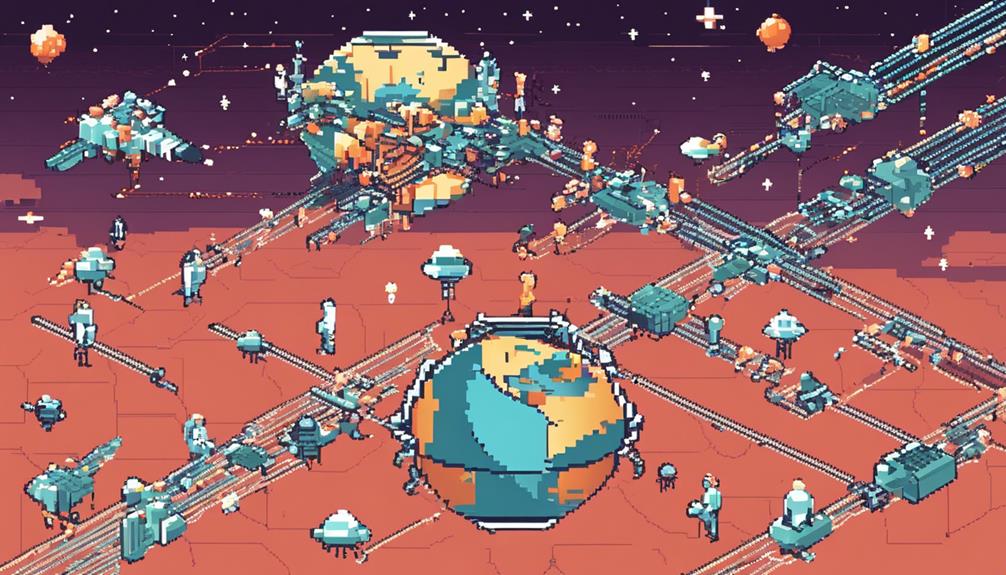
Space traffic management solutions encompass the integration of real-time data analytics to monitor debris orbits and assess collision risks for enhanced space safety. As the number of objects in space continues to increase, the need for effective space traffic management becomes imperative. Ground-based radar stations and telescopes play a crucial role in monitoring debris positions and trajectories. These systems provide essential data for tracking even the smallest debris fragments, enabling a comprehensive understanding of the space environment.
To efficiently manage space traffic, a database of debris trajectories is essential for collision avoidance and predictive modeling. This database allows for the identification of potential collision risks and facilitates proactive measures to mitigate these risks. Enhanced sensor capabilities are also necessary to track the growing amount of space debris effectively.
Cost-effective and efficient tracking solutions are vital for managing space debris and ensuring the long-term sustainability of space activities. By implementing advanced technologies and data analytics, space agencies and organizations can enhance their space traffic management capabilities and contribute to a safer space environment for future missions.
| Aspect | Description |
|---|---|
| Monitoring Tools | Ground-based radar stations and telescopes |
| Data Analytics Capability | Real-time analytics for monitoring debris orbits |
| Database of Debris Trajectories | Essential for collision avoidance and predictive modeling |
| Sensor Technology | Necessary for tracking even the smallest debris fragments |
Legal Framework for Debris Control
Incorporating a comprehensive legal framework is crucial for effective management of debris control in outer space.
- International Agreements: The legal framework for space debris control encompasses international agreements such as the Outer Space Treaty and the Space Debris Mitigation Guidelines. These agreements establish fundamental principles for responsible space activities and outline specific debris mitigation measures.
- National Implementation: Countries are urged to develop and implement national laws and regulations that align with international guidelines on space debris management. This ensures a harmonized approach towards debris control on a global scale.
- Preventing New Debris: One of the primary objectives of legal frameworks is to prevent the creation of new space debris. By imposing regulations on satellite launches and operations, the aim is to minimize the generation of additional objects in space.
- Promoting Sustainable Practices: Legal frameworks not only focus on removing space debris but also emphasize the importance of sustainable space practices. Compliance with debris mitigation guidelines is essential for safeguarding the long-term sustainability and safety of activities conducted in outer space.
Sustainable Practices in Space Operations
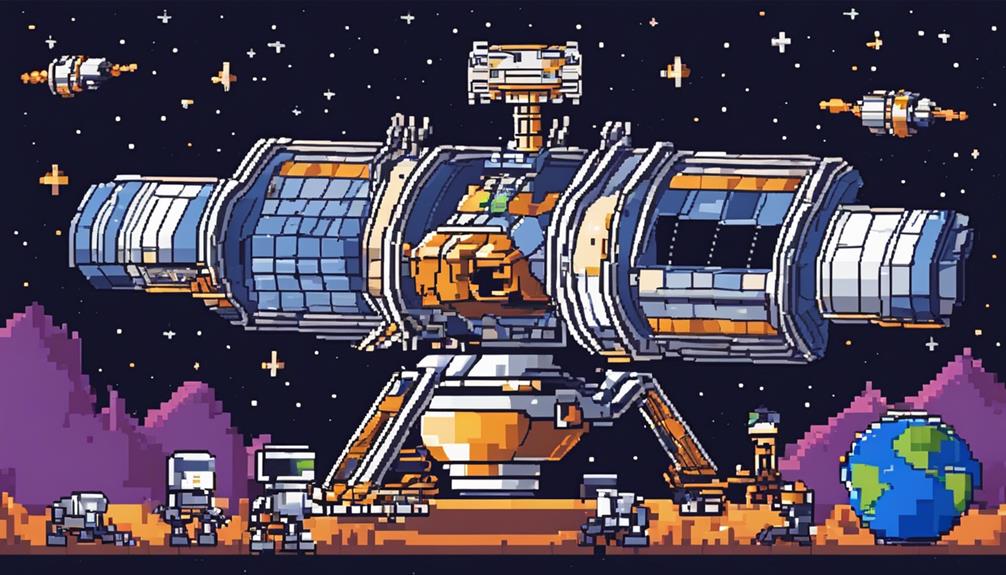
Implementing sustainable practices in space operations involves a strategic focus on setting specific goals for post-mission disposal success rates to effectively reduce debris accumulation. This commitment to sustainable behavior in space missions is crucial for tackling the risks associated with space debris. Transparency and adherence to established norms are essential for promoting sustainability in the space industry. Collaboration and rapid technological advancements are recommended to achieve sustainable space operations effectively. Rules governing sustainable behavior in orbit play a vital role in mitigating the risks posed by space debris and ensuring a secure space environment. The Space Industry Debris Mitigation Recommendations provide specific targets for spacecraft disposal and debris removal, aiming to foster a safer and more sustainable space environment.
| Goals for Sustainable Space Operations | Importance |
|---|---|
| Specific post-mission disposal rates | Reducing debris accumulation |
| Transparent practices | Promoting sustainability |
| Collaborative efforts | Achieving sustainable operations |
| Technological acceleration | Enhancing space sustainability |
| Debris removal targets | Ensuring a secure space environment |
Frequently Asked Questions
What Are Some Solutions to Space Debris?
Space cleanup is a critical endeavor that necessitates cutting-edge technology and innovative solutions. Orbital sustainability relies on advancements such as space lasers and orbital-use fees to manage debris effectively. Collaboration between stakeholders is imperative for implementing sustainable practices and addressing the escalating space debris challenge. Advanced technologies like harpoons and nets play a pivotal role in collision risk mitigation and effective debris removal. Innovation is key to ensuring a clean and safe orbital environment.
What Are the Problems With Space Debris?
The problems associated with space debris primarily revolve around the potential impacts on operational satellites and future space missions. Impact assessment is crucial to understand the risks posed by the growing number of debris fragments. Tracking technology plays a pivotal role in monitoring the movement of space debris and predicting collision risks accurately. Failure to effectively manage space debris can lead to catastrophic consequences, including the destruction of essential space infrastructure and the generation of more debris.
How Can We Protect Against Space Debris?
Space debris mitigation strategies aim to safeguard orbital assets by reducing the risk of catastrophic collisions. Techniques include active debris removal, space tugs, and controlled reentries to limit debris accumulation. These methods enhance orbital safety and sustainability by preventing cascading collisions that could generate more fragments. Implementing rigorous monitoring and tracking systems is crucial for early detection and response to potential threats posed by space debris.
What Is the Biggest Threat to Space Debris?
Space debris impact poses the most significant threat to space operations due to potential orbital collisions. The vast number of objects, particularly those above 10 centimeters, heightens risks of damage to satellites and infrastructure. Collisions can lead to mission failures, generation of additional debris, and hamper future space activities. Effective management strategies are essential to mitigate these risks and ensure a secure and sustainable space environment.
